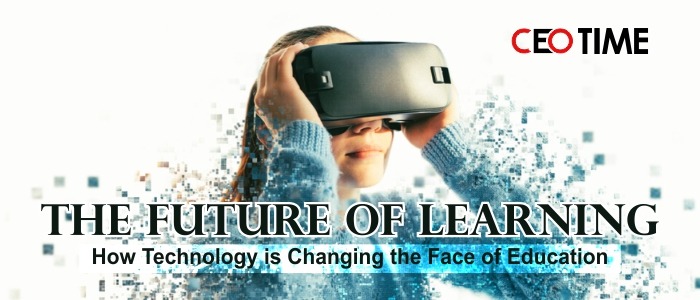How Technology Is Changing The Face Of Education
Technology is transforming the way we learning and teach in today’s world. From online courses and virtual classrooms to artificial intelligence and simulation software, the education sector is undergoing a radical change. In this blog, we will explore how technology is changing the face of education and its impact on the way we learn.
Online Learning
Online learning has made education more accessible and convenient than ever before. With the internet and digital devices, anyone can now access educational content from anywhere in the world. Online courses and programs are now available in a variety of fields, from business and technology to art and music. Many universities and colleges now offer online degrees, making it possible for people to pursue their education without having to be physically present on campus.
Online learning also allows for a more flexible learning schedule, as students can access course material at their own pace. They can also rewind and replay lectures, review notes and assignments, and participate in virtual discussions with their peers and instructors. This flexibility is especially beneficial for working adults, parents, and students who live in remote areas or have disabilities.
Virtual Classrooms
Virtual classrooms have revolutionized the traditional classroom experience by creating a digital environment where students and teachers can interact in real-time. Virtual classrooms offer a range of tools, such as video conferencing, whiteboards, and document sharing, to facilitate a dynamic and engaging learning experience. This technology also enables teachers to reach a global audience, making it possible for students to participate in classes from anywhere in the world.
Artificial Intelligence
Artificial intelligence is playing an increasingly important role in education by providing personalized learning experiences. AI-powered learning systems can analyze student performance data, such as test scores and assignment grades, to provide tailored recommendations and feedback. This can help students focus on their areas of weakness and improve their overall performance.
AI is also being used to create virtual tutors that can help students with specific subjects or provide them with instant feedback on their work. This technology can also be used to personalize learning by adapting to each student’s preferred learning style, pace, and level of understanding.
Simulation Software
Simulation software is being used to provide hands-on learning experiences that would otherwise be difficult or impossible to achieve in a traditional classroom setting. This technology can be used to simulate real-world scenarios, such as surgical procedures, financial planning, and disaster response, to help students learn and prepare for careers in these fields.
Simulation software can also be used to create virtual labs where students can experiment with different variables and see the results in real-time. This technology provides a safe and controlled environment for students to explore and learn, without the risk of harm to themselves or others.
Gamification
Gamification is the use of game design elements in non-game contexts, such as education, to increase engagement and motivation. This technology is being used to make learning more interactive and fun by turning traditional lessons into games or challenges. For example, students might be asked to complete a series of challenges or missions to progress through a course or earn rewards for their progress.
Gamification can also help students develop problem-solving skills, critical thinking, and teamwork. This technology can also be used to provide instant feedback and assessments, making it easier for students to track their progress and see their achievements.
Conclusion
In conclusion, technology is changing the face of education in a number of ways, making it more accessible, personalized, and engaging. From online learning and virtual classrooms to artificial intelligence and simulation software, these technologies are revolutionizing the way we learn and prepare for careers. As technology continues to advance, we can expect to see even more innovative and effective tools for education in the future.
FAQ
What is the impact of technology on education?
Technology has greatly impacted education by transforming the way we learn and teach. From online learning to virtual classrooms and artificial intelligence, technology has made education more accessible, personalized, and engaging.
How has technology changed the way we learn and teach?
Technology has revolutionized education by making it possible for students to access educational content from anywhere in the world. With virtual classrooms and online courses, students can participate in classes from anywhere and learn at their own pace. Artificial intelligence is also being used to provide personalized learning experiences, while simulation software is used to provide hands-on learning experiences.
What are some examples of technology used in education?
Some examples of technology used in education include online learning platforms, virtual classrooms, artificial intelligence, simulation software, and gamification.
How has online learning changed the traditional classroom experience?
Online learning has made education more accessible and convenient for students. With online courses and programs, students can pursue their education from anywhere in the world and at their own pace. Virtual classrooms have also transformed the traditional classroom experience by creating a digital environment where students and teachers can interact in real-time. This technology has made it possible for teachers to reach a global audience and for students to participate in classes from anywhere.
Follow Us: Ceotimemagazine


